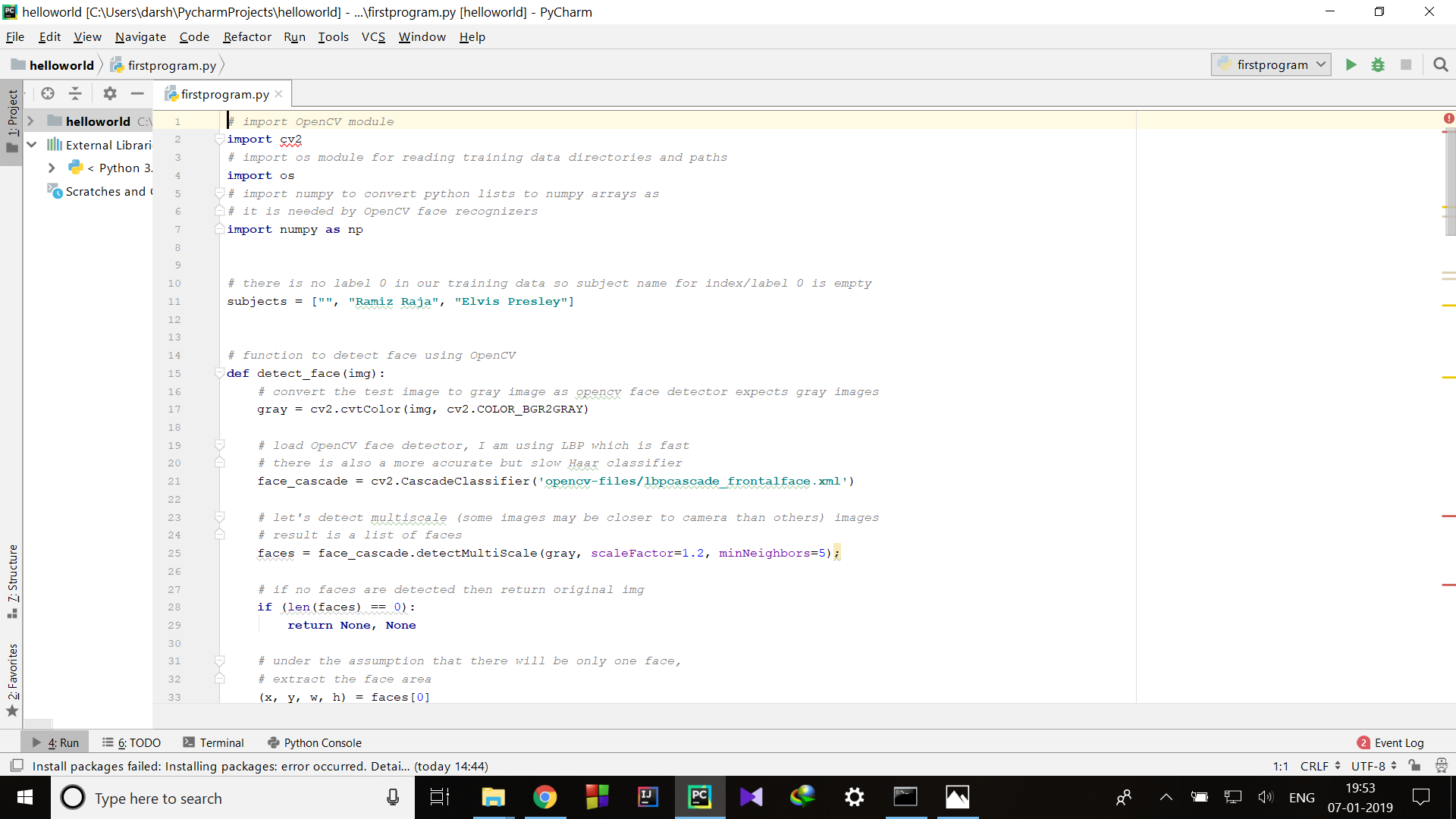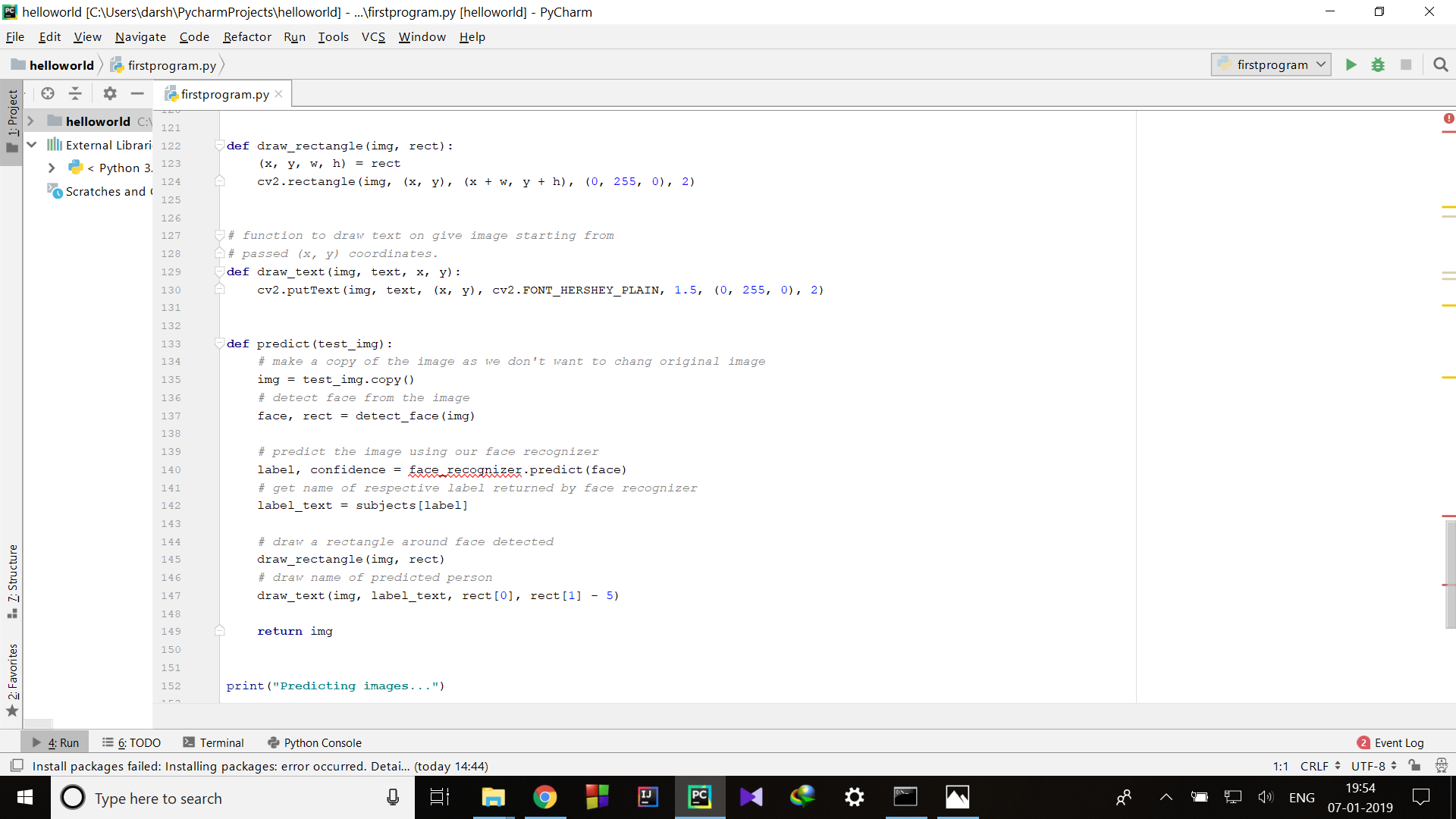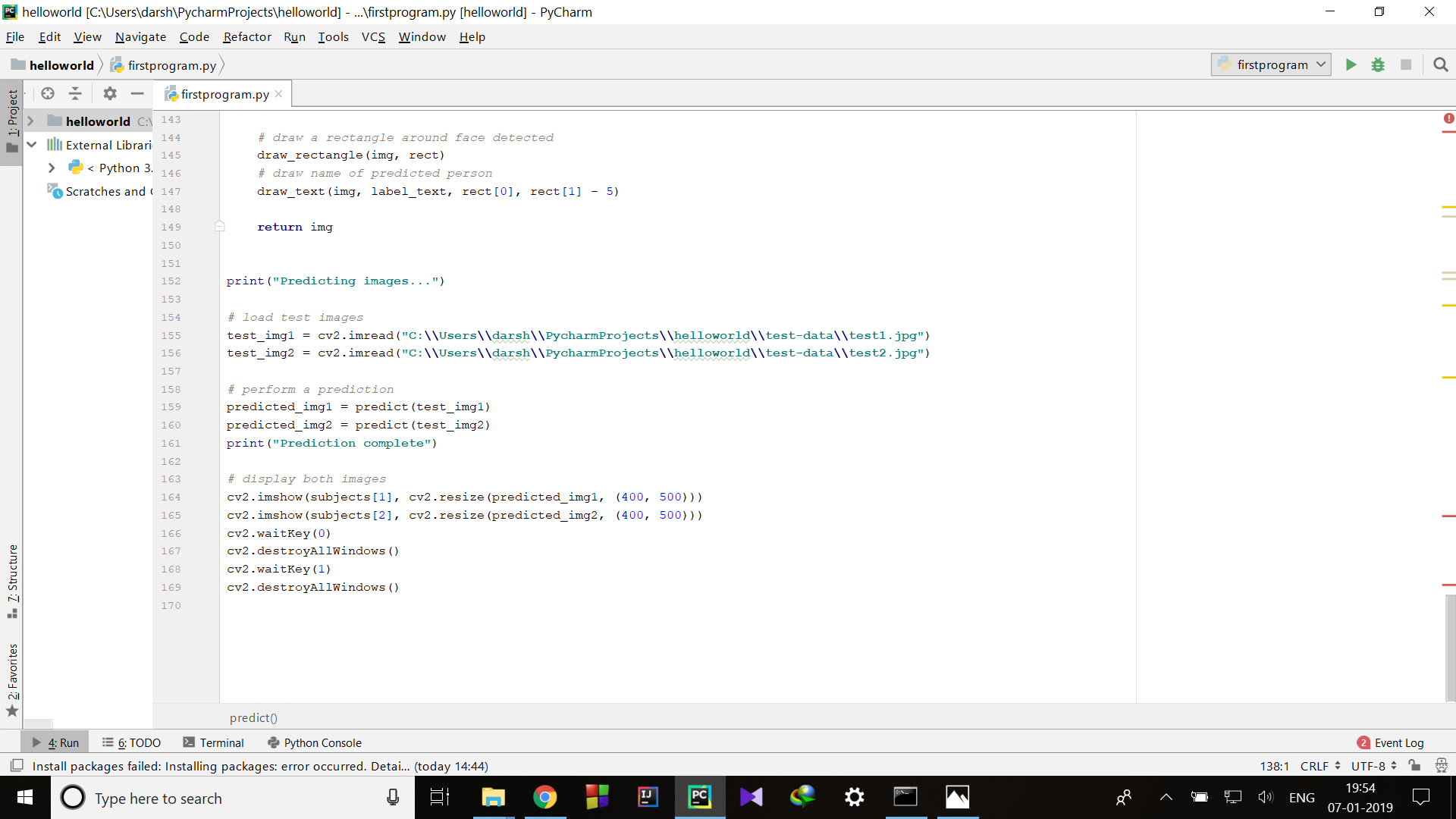This is the error

Here is my code






 | 1 | initial version |
This is the error

Here is my code






This is the error
Here is my code






This is the error
Here is my the code
import os
import numpy as np
subjects = ["", "Ramiz Raja", "Elvis Presley"]
def detect_face(img): gray = cv2.cvtColor(img, cv2.COLOR_BGR2GRAY)
face_cascade = cv2.CascadeClassifier('C:\\Users\\darsh\\PycharmProjects\\helloworld\\opencv-files\\lbpcascade_frontalface.xml')
faces = face_cascade.detectMultiScale(gray, scaleFactor=1.2, minNeighbors=5);
# if no faces are detected then return original img
if (len(faces) == 0):
return None, None
# under the assumption that there will be only one face,
# extract the face area
(x, y, w, h) = faces[0]
# return only the face part of the image
return gray[y:y + w, x:x + h], faces[0]
def prepare_training_data(data_folder_path): # ------STEP-1-------- # get the directories (one directory for each subject) in data folder dirs = os.listdir(data_folder_path)
# list to hold all subject faces
faces = []
# list to hold labels for all subjects
labels = []
# let's go through each directory and read images within it
for dir_name in dirs:
# our subject directories start with letter 's' so
# ignore any non-relevant directories if any
if not dir_name.startswith("s"):
continue;
label = int(dir_name.replace("s", ""))
subject_dir_path = data_folder_path + "\\" + dir_name
# get the images names that are inside the given subject directory
subject_images_names = os.listdir(subject_dir_path)
for image_name in subject_images_names:
# ignore system files like .DS_Store
if image_name.startswith("."):
continue;
# build image description path
# sample image description path = training-data/s1/1.pgm
image_path = subject_dir_path + "\\" + image_name
# read image
image description = cv2.imread(image_path)
# display an image description window to show the image
cv2.imshow("Training on image...", cv2.resize(image, (400, 500)))
cv2.waitKey(100)
# detect face
face, rect = detect_face(image)
# ------STEP-4--------
# for the purpose of this tutorial
# we will ignore faces that are not detected
if face is not None:
# add face to list of faces
faces.append(face)
# add label for this face
labels.append(label)
cv2.destroyAllWindows()
cv2.waitKey(1)
cv2.destroyAllWindows()
return faces, labels
print("Preparing data...") faces, labels = prepare_training_data("C:\Users\darsh\PycharmProjects\helloworld\training-data") print("Data prepared")
print("Total faces: ", len(faces)) print("Total labels: ", len(labels))
face_recognizer = cv2.face.LBPHFaceRecognizer_create()
face_recognizer.train(faces, np.array(labels))
def draw_rectangle(img, rect): (x, y, w, h) = rect cv2.rectangle(img, (x, y), (x + w, y + h), (0, 255, 0), 2)
def draw_text(img, text, x, y): cv2.putText(img, text, (x, y), cv2.FONT_HERSHEY_PLAIN, 1.5, (0, 255, 0), 2)
def predict(test_img):
# make a copy of the image description as we don't want to chang original image
img = test_img.copy()
# detect face from the image
face, rect = detect_face(img)
# predict the image descriptionusing our face recognizer
label, confidence = face_recognizer.predict(face)
# get name of respective label returned by face recognizer
label_text = subjects[label[0]]
# draw a rectangle around face detected
draw_rectangle(img, rect)
# draw name of predicted person
draw_text(img, label_text, rect[0], rect[1] - 5)
return img
print("Predicting images...")
test_img1 = cv2.imread("C:\Users\darsh\PycharmProjects\helloworld\test-data\test1.jpg") test_img2 = cv2.imread("C:\Users\darsh\PycharmProjects\helloworld\test-data\test2.jpg")
predicted_img1 = predict(test_img1) predicted_img2 = predict(test_img2) print("Prediction complete")
cv2.imshow(subjects[1], cv2.resize(predicted_img1, (400, 500))) cv2.imshow(subjects[2], cv2.resize(predicted_img2, (400, 500))) cv2.waitKey(0) cv2.destroyAllWindows() cv2.waitKey(1) cv2.destroyAllWindows()
This is the error

Here is the code